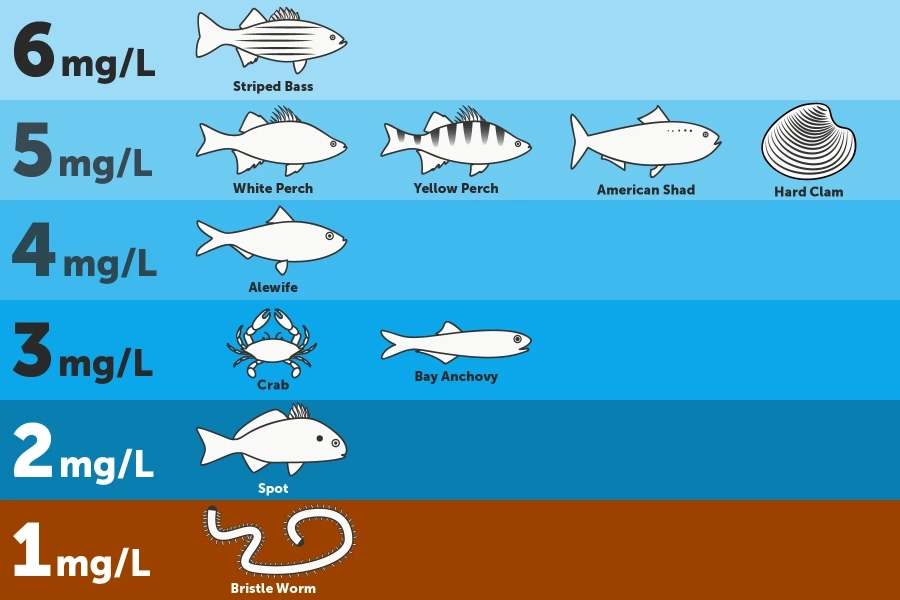Dissolved Oxygen
Learn how much oxygen the Bay’s living creatures need to survive, and what happens when low-oxygen areas form.
Dissolved oxygen (DO) is the amount of oxygen that is present in the water. It is measured in milligrams per liter (mg/L), the number of milligrams of oxygen dissolved in a liter of water.

Show image description
The infographic divides the Chesapeake Bay's water column into six levels, based on depth. The infographic includes drawings of different animals at different depths, next to the minimum amount of oxygen those animals need to survive. On the Bay's bottom, where a bristle worm is shown, species need dissolved oxygen concentrations of at least 1mg/L. Above that, where a fish known as a spot is shown, species need dissolved oxygen concentrations of at least 2 mg/L. Above that, where a crab and bay anchovy are shown, species need dissolved oxygen concentrations of at least 3mg/L. Above that, where an alewife is shown, species need dissolved oxygen concentrations of at least 4mg/L. Above that, where a white perch, yellow perch, American shad, and hard clam are shown, species need dissolved oxygen concentrations of at least 5mg/L. And at the top of the Bay's water column, where a striped bass is shown, species need dissolved oxygen concentrations of at least 6mg/L.
